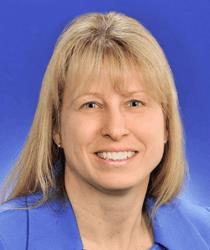Lilly Makes It Easier For Physicians To Become Investigators

By Ed Miseta, Chief Editor, Clinical Leader

As the global head of clinical innovation for Eli Lilly and Company, Katherine Vandebelt knows there are many things pharma needs to do better if it hopes to get needed medicines to patients faster. In her current role, Vandebelt’s passion lies with the patient. That includes making sure companies are properly engaging with them, that they are provided with the best options available, and that they are prepared to take on those options. She is also aware that patients can’t take those journeys alone.
“It’s very important for patients to have someone available to take that journey with them,” she noted recently at the Disruptive Innovations Conference in Boston. “Patients need someone to help care for them, and generally that person will be their physician.”
The Numbers Don’t Add Up
 No drug can make it to market without first navigating the clinical trials process. That process places a huge burden on patients. Unfortunately, it also puts a burden on the research professionals involved, including investigators and study coordinators. Knowing that, it should come as no surprise to anyone involved in the process that many physicians will oversee one trial and then opt to no longer take part in them.
No drug can make it to market without first navigating the clinical trials process. That process places a huge burden on patients. Unfortunately, it also puts a burden on the research professionals involved, including investigators and study coordinators. Knowing that, it should come as no surprise to anyone involved in the process that many physicians will oversee one trial and then opt to no longer take part in them.
“We need to place a greater focus on decreasing that burden on investigators and making it easier for physicians to participate in clinical research,” says Vandebelt. When patients are trying to figure out the best option for them, they generally go to their physician and trust what they recommend. Historically, a lot of that research has been done in academic centers. But today trials have moved into communities with more non-academic physicians getting involved. Still, the number of physicians we need to conduct clinical research falls far short of what is needed.”
Vandebelt notes that a quick review of ClinicalTrials.gov provides an estimated number of patients needed to complete planned trials. From that number we can estimate the number of physicians needed to oversee those patients. The number is estimated to be somewhere between one million and seven million physicians.
“The total number of physicians practicing in the U.S. today is around 800,000,” she says. “They are not the only ones solving our recruitment challenge, but even if we were able to recruit every one of them to participate in a trial, we wouldn’t have enough to enroll the number of patients we need.”
There are other solutions in the works. TransCelerate is one group trying to break down barriers to clinical research by having members share data. While the effort does not represent the entire industry, about one million records have already been shared across eight companies, which Vandebelt notes is encouraging. There is duplication of investigators between companies, but it appears there are about 155,000 investigators from around the world contained in those records. That means the overlap between the eight companies is extremely high.
In February 2015 TransCelerate announced it would be working with DrugDev to develop an investigator registry, which went live in January 2016. Efforts like that make it possible for pharma and CROs to go back to physicians they know they can rely on. The bigger concern for pharma should be those investigators who work on one trial and never do it again.
“We often wonder why it is so hard to get patients to participate in trials,” states Vandebelt. “Not only do we use the same investigators, we’re now trying to enroll the same patients. This is why it is taking so long for pharma to fully enroll clinical trials. It’s not a sustainable model and does not help physicians to care for their patients.”
Understand The Reluctance
To understand what needs to be done, Lilly spoke to study coordinators, investigators, and startup companies about the problem. It found that in order to encourage physicians to participate in clinical research, there had to be organizational incentives and infrastructure to help them. Vandebelt believes very little has been done to help.
“I think that we as sponsors create many of the barriers that exist,” she says. “We believe physicians may not want to lose money by transferring a patient to clinical research, and that many simply do not believe in research. But when you start talking to them, you discover those are not the main concerns.”
Vandebelt has found the main concern for physicians is the difficulty involved with making the switch from clinician to researcher. Many do not have the training or experience to be a clinical researcher, and that training can be difficult for them to acquire. A lot of that knowledge comes from reading rather than experience, something physicians are neither rewarded (money) nor recognized (greater opportunities) for doing.
“Add to that the fact that many do not have the staff to perform research,” says Vandebelt. “In some cases they simply don’t agree with the scientific question we’re trying to ask. Therefore, the research is not something they want to participate in.”
To solve the problem, a program has been created within the clinical innovation group at Lilly. The goal of the program is to make it easy for physicians to get started in research, make it easy for them to stay engaged, and help them grow a research practice based on their goals and desires.
Part of that initiative is helping physicians understand how trials can lead to a better quality of care, and ensuring they know what it means to be a part of clinical research. Anecdotal evidence gathered by the group over the last 24 months shows patients participating in clinical research have better long-term outcomes. Discoveries made with these patients also help bring down the cost of healthcare. The clinical research process also helps physicians learn more about the disease and how it impacts patients.
“We want investigators, physicians, clinicians, and research professionals to feel fulfilled,” notes Vandebelt. “They are there to treat patients and they also enjoy helping patients. But we also have to make sure there are incentives for them to do so. We can’t expect them to pay to do research. Money is available to cover research. We just need to figure out how to distribute it in the best manner possible.”
Find The Right Solution
While the investigator problem is clear, the solution is not so clear. First, Vandebelt believes there needs to be buy-in from the institutions that employ physicians. Leaders at hospitals, clinics, and practices must look at data and information available to understand the importance of clinical research. The available information and evidence is what will encourage staff to opt in to conducting research.
“We need to understand who the decision maker is (regarding participation in clinical research) at that institution, be it a hospital, healthcare system, or private practice,” says Vandebelt. “We need to understand where they stand and whether they have the right information and data regarding participation in research. These are the individuals who will decide if providing clinical trials as a patient option is something worth pursuing by the institution. That mindset is very important and has to be the starting point.”
Once everyone has opted in, pharma cannot allow the burden of educating staff about clinical research to fall upon the institutions. Pharma must take a leading role in providing that training. Vandebelt believes providing digitization and automation solutions will also help staff members perform their jobs better.
Next, pharma and CROs can help physicians identify appropriate patients. This can be done by making patients more aware of clinical research and helping them to get more involved in their healthcare decisions.
“We are now providing physicians with tools to help them participate in clinical research,” says Vandebelt. “But we still need to dramatically expand the research community. Part of our effort involves reaching out to different organizations to get them involved. We are reaching out to startup companies to figure out how we can better help them. We’re also looking at profiles of physicians to identify those who might be most interested in research and have the patients we desire.”
Don’t Be The Biggest Blocker
Even if pharma does all of the above, and does it well, it still has to stop being the biggest obstacle to clinical research. This is done by discouraging physician participation. If you don’t believe you’re part of the problem, consider this scenario: You find a clinic willing to participate. They are highly motivated, want to participate, and are willing to be trained. That’s when sponsors start the disqualification process. Are they qualified? Can they meet our timelines? Are they able to enroll eight patients within our timeline? Will they provide quality data?
“Because these physicians perform standard of care, we start to question their commitment to research,” states Vandebelt. “We need more physicians, but at the same time we all want experts, those physicians who have performed research in the past and were able to enroll 50 patients. We are fearful of committing to someone who has not done it in the past and has a history of performance.”
Lilly is attempting to overcome this problem by identifying new researchers. It is also reenergizing its training programs to be more practical and hands on so as to give physicians the experience of actually going through the clinical research process. Thus far the program has been tried for studies in rheumatology, diabetes, and pain. Lilly is finding investigators who have never performed clinical research in the past are producing better quality data than some of the more experienced investigators. Their diligence to providing quality care to patients is also higher.
“We are taking a close look at physicians who are focused on new technologies and are interested in being part of a broader care team,” adds Vandebelt. “Many physicians are recognizing they can’t care for patients all by themselves. There’s a huge motivated group of physicians out there who are willing to work with us to break down the operational barriers. It’s our job to leverage what we know and try to make it easier for them to participate.”
